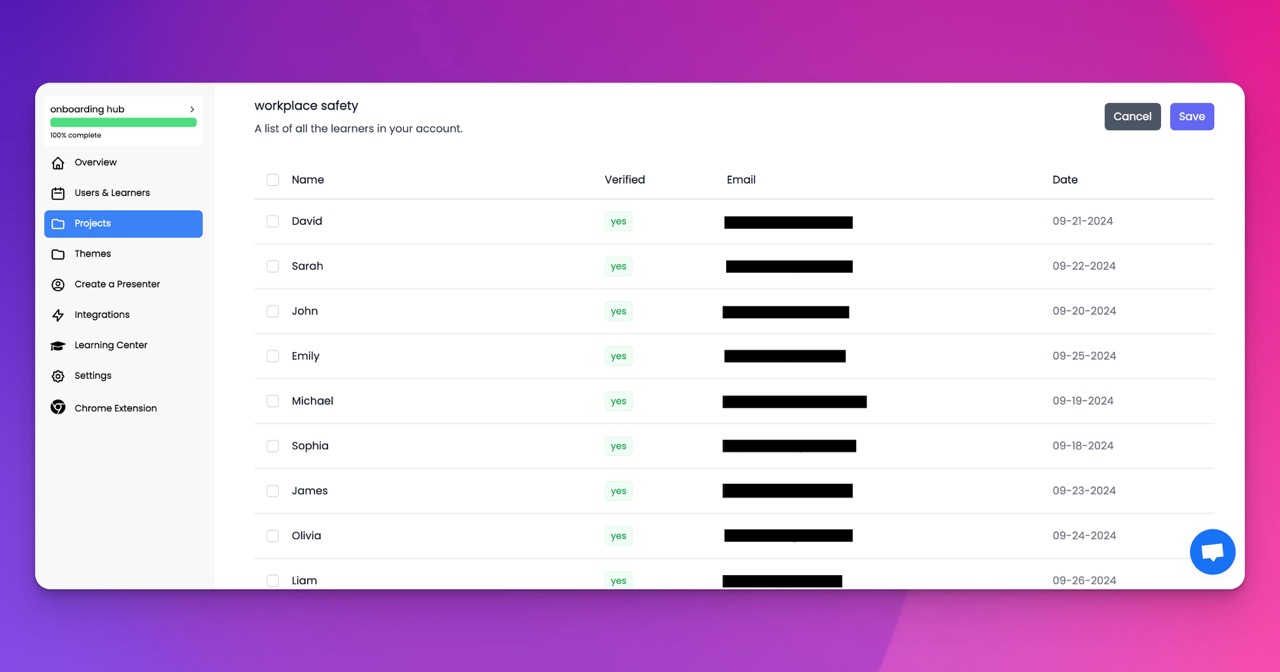🎉 Trainday now integrates with Zendesk and Hubspot 🎉 Trainday now integrates with Zendesk and Hubspot 🎉 Trainday now integrates with Zendesk and Hubspot
🎉 Trainday now integrates with Zendesk and Hubspot
🎉 Trainday now integrates with Zendesk and Hubspot
Contact
Secure Shores: Advancing Maritime Port Safety with Data-Driven Training Programs
In the maritime industry, ensuring the safety of port operations is a critical challenge, demanding continuous adaptation and vigilance. "Secure Shores" highlights how maritime ports are harnessing the power of data to create advanced, data-driven training programs that enhance safety protocols and reduce risks. By analyzing incident reports, operational data, and worker feedback, ports can develop targeted training initiatives that specifically address the unique safety challenges of the maritime environment. This blog post explores the significant role that data-driven training plays in advancing safety at maritime ports, leading to safer working conditions and more efficient operations.
Utilizing Data to Enhance Training Relevance
The foundation of any effective safety training program is its relevance to the real-world challenges workers face daily.
Comprehensive Data Analysis
Collecting and analyzing data from incidents, safety audits, and operational performance allows ports to identify common hazards and procedural gaps. This analysis helps tailor training programs to focus on the areas where there is the greatest need for improvement, ensuring that training is both applicable and practical.
Feedback-Driven Modifications
Integrating feedback from frontline workers who experience daily operations firsthand provides invaluable insights that can further refine safety training. This direct input ensures that the training reflects the practical realities of the port environment and addresses the specific concerns and suggestions of the workforce.
Developing Targeted Safety Modules
Specific risks identified through data analysis can be directly addressed through customized training modules, enhancing the effectiveness of safety protocols.
Scenario-Based Safety Exercises
Developing training scenarios that simulate real-life situations found in incident reports helps workers practice their responses to emergencies in a controlled setting. These exercises are designed to mimic the specific conditions and challenges of the maritime port environment, making the training highly relevant and engaging.
Specialized Skill Training
Data often reveals specific operational areas where additional skills training is needed. For example, if data shows frequent equipment-related accidents, specialized modules can focus on proper equipment handling, maintenance, and safety checks.
Continuously Improving Safety Practices
A dynamic approach to training, fueled by ongoing data collection and analysis, ensures that safety protocols evolve with changing conditions and new challenges.
Regular Program Updates
As new safety data and technology emerge, training programs must be updated regularly to incorporate the latest best practices and innovations in safety management. This continuous learning approach helps ports stay ahead of potential safety issues before they become critical.
Proactive Risk Management
Analyzing trends and predictive data allows ports to anticipate potential future risks and incorporate preventive measures into training programs. This proactive approach not only prevents accidents but also prepares workers to handle unexpected situations effectively.
Strengthening Compliance and Regulatory Adherence
Data-driven training programs help ensure that all safety procedures comply with national and international regulations, reducing legal risks and enhancing the port's operational credibility.
Enhanced Compliance with Safety Standards
By aligning training programs with current safety regulations and standards, ports can ensure compliance and demonstrate their commitment to maintaining a safe working environment. This compliance is critical for meeting legal requirements and for fostering trust with shipping companies, insurers, and regulatory bodies.
Systematic Documentation
Keeping detailed records of training programs, updates, and employee participation forms an essential part of compliance. Data-driven systems can help manage these records efficiently, ensuring easy access during audits and reviews.
Conclusion
"Secure Shores: Advancing Maritime Port Safety with Data-Driven Training Programs" underscores the critical importance of using data to inform and enhance safety training in maritime port operations. By focusing on specific, data-identified needs, maritime ports can effectively reduce workplace hazards and improve overall safety. As the industry continues to evolve, embracing data-driven approaches will be vital for ports aiming to maintain high safety standards and operational excellence in an increasingly complex global trade environment.
Accelerate Compliance.
Deliver OSHA-Ready Courses Instantly.
Empower your team with data-driven training solutions tailored to your industry's safety standards. Stay compliant, reduce risks, and boost productivity with AI-powered course creation.
